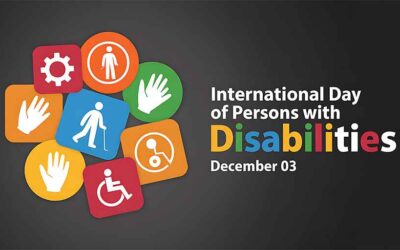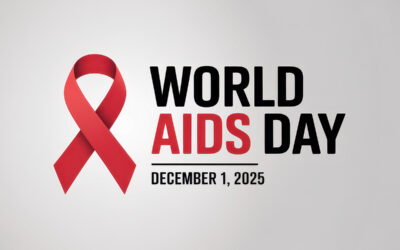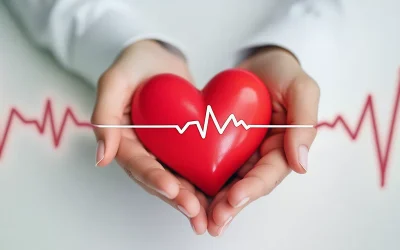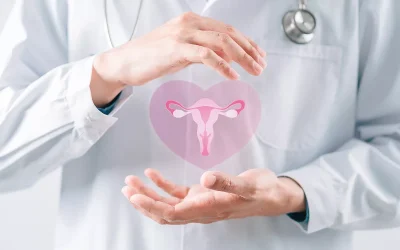World Blood Donor Day 2025: Donate Blood, Save Lives

World Blood Donor Day is observed every year on 14th June to raise awareness about the need for blood donation and recognise the vital role of blood donors. Since blood cannot be created artificially, its supply relies entirely on willing donors. In India, the demand for blood continues to rise, but despite this growing need, the supply often falls short, making it crucial to encourage more people to donate regularly. This blog highlights the significance of the day, benefits of blood donation, and how individuals can participate in this day. Let’s start with how World Blood Donor Day came to be.
Table of Contents
ToggleThe History of World Blood Donor Day
World Blood Donor Day was established by the World Health Organization (WHO) in 2004 to promote voluntary blood donation and thank donors worldwide for their life-saving contributions. The date, 14th June, was chosen to honour the birthday of Karl Landsteiner, an Austrian scientist who discovered the ABO blood group system in 1901. This discovery laid the foundation for safe blood transfusions and modern blood banking.
The day holds great significance as it highlights the continuous need for safe blood to treat patients facing emergencies, surgeries, and chronic illnesses. It also serves to raise awareness about the importance of regular donations from healthy individuals. Across the globe, this observance encourages governments, health organisations, and communities to work together to improve blood donation systems and ensure blood availability for all who need it.
World Blood Donor Day Theme 2025
The official theme for 2025 is “Give blood, give hope: together we save lives.” This message highlights the powerful role of voluntary blood donation in offering both medical support and emotional strength to those in need.
The phrase “Give blood, give hope” reflects how each donation gives someone a renewed chance at life. “Together we save lives” reminds us that ensuring a steady blood supply requires collective effort from individuals, communities, and healthcare systems.
The theme for this year focuses on the following:
- Thanking regular blood donors for their continued contribution
- Encouraging more people to donate and make it a regular habit
- Raising awareness about the need for safe and timely blood supplies
- Strengthening national systems to support voluntary blood donation
- Promoting a sense of unity and social responsibility
In India, this message carries added weight, where growing demand and limited access to blood make community participation essential.
The Need for Blood Donation in India
There is a huge demand for blood in India due to a high number of road accidents, medical emergencies, surgeries, and complications during childbirth. Patients with conditions such as thalassaemia, cancer, and severe anaemia also require repeated transfusions. Despite this need, many hospitals and blood banks across the country report shortages, especially in rural and underserved areas.
According to estimates by the World Health Organization, at least one percent of a country’s population should donate blood each year to meet its basic needs. For India, this translates to over 13 million units annually. Voluntary donations remain the most reliable and safest source of blood. Yet, myths, fear of the process, and lack of awareness discourage many from donating.
Benefits of Blood Donation
Blood donation plays an important role in saving lives, but it can also have positive effects on donors themselves. When done safely and at recommended intervals, it contributes to both community well-being and personal health.
For recipients:
- Provides essential support during surgeries, trauma care, and childbirth complications
- Helps manage chronic conditions such as thalassaemia, sickle cell anaemia, and cancer
- Maintains a steady supply for emergency situations where immediate transfusion is critical
For donors:
- Promotes the production of new blood cells, which may support circulation and general health
- Includes a basic health check before each donation, helping identify early signs of illness
- Encourages a sense of community involvement and social responsibility
Although the act of giving blood may seem small, it contributes significantly to strengthening the healthcare system and giving patients a better chance at recovery.
Who Can Donate Blood?
Not everyone is eligible to donate blood, as certain health and safety guidelines must be met to protect both the donor and the recipient. These criteria help ensure that the blood collected is safe and suitable for transfusion.
A person can usually donate blood if they:
- Are between 18 and 65 years of age
- Weigh at least 50 kilograms
- Have a haemoglobin level of 12.5 g/dL or higher
- Are in good general health, without any active infections or recent illnesses
- Have not donated blood in the past 3 months (for men) or 4 months (for women)
Donation is usually not allowed if the person:
- Has tested positive for infections such as HIV, hepatitis B or C, or syphilis
- Has a history of certain chronic illnesses, such as severe heart disease or cancer
- Is currently taking certain medications or undergoing treatment that could affect the safety of the donation
- Has recently received a vaccine, had surgery, or travelled to areas with a high risk of infection
Blood donation staff conduct a health screening before each donation to ensure these conditions are met. This process is quick, confidential, and designed to protect everyone involved. The next section outlines what a first-time donor can expect during the process.
Myths about Blood Donation
In many parts of India, myths and misunderstandings often discourage people from donating blood. These beliefs, though widely circulated, are not based on medical facts. Addressing them is essential to help individuals feel confident about donating:
Myth 1: Donating blood is painful.
Many fear that the needle prick will be very painful. In reality, the pain is brief and minor, much like a routine injection. Trained staff carry out the process with care to ensure comfort.
Myth 2: Donating blood causes weakness or chronic health problems.
A small number of donors may feel light-headed, but the body quickly replaces the lost blood volume. Healthy individuals can safely donate without lasting effects on strength or stamina.
Myth 3: People with common illnesses like cold or flu can never donate.
Blood donation should be postponed until the donor has fully recovered from an active infection. However, most past illnesses do not permanently disqualify someone. Eligibility is checked during the pre-donation screening.
Myth 4: Blood donation can spread infections like HIV.
This is false. The equipment used is sterile and for single use only. There is no risk of contracting any infection during the donation process.
Myth 5: Only rare blood groups are needed.
All blood groups are equally important. A balanced supply is essential to meet the needs of patients with different blood types, not just those with rare groups.
Myth 6: Women should not donate blood because they are more likely to be anaemic.
Women who pass the required haemoglobin check can donate just like men. Donation guidelines are designed to ensure it is safe for every eligible individual.
Myth 7: Donating blood results in weight loss or permanent weakness.
There is no connection between blood donation and chronic weight loss. The body replaces the donated blood naturally, and most donors feel back to normal shortly after resting and hydrating.
Myth 8: People with tattoos or piercings cannot donate blood.
Individuals with tattoos or piercings can donate, provided the procedure was done in a hygienic setting and at least 12 months have passed. This precaution helps prevent any risk of infection.
What to Expect as a First Time Blood Donor
Donating blood for the first time can feel unfamiliar, but the process is simple, safe, and usually takes less than an hour. Here’s what to expect:
Before the Donation
The process begins with a short health check to ensure it is safe to donate. This includes measuring weight, haemoglobin levels, blood pressure, and pulse. A healthcare professional will also ask questions about medical history, recent illnesses, medications, and travel history. These checks help protect both the donor and the recipient. If all the information and test results are satisfactory, the donor will be guided to the donation area.
During the Donation
The donor will be comfortably seated, and a sterile needle will be inserted into a vein, usually in the arm. Around 350 to 450 millilitres of blood is collected, which generally takes about eight to ten minutes. Throughout the procedure, trained staff monitor the donor to make sure they feel comfortable and address any concerns immediately. The process is usually painless, though some may feel a slight pinch when the needle is inserted.
After the Donation
Once the donation is complete, the needle is removed, and a small bandage is applied to the site. Donors are encouraged to rest for 10 to 15 minutes and enjoy some fluids and light snacks provided by the centre. This helps prevent dizziness or fainting. It is advisable to avoid strenuous physical activity or heavy lifting for the rest of the day. Some donors might feel light-headed briefly, but this usually passes quickly with rest and hydration.
The entire procedure is safe, and the body begins replenishing the lost blood immediately. Many first-time donors find the experience rewarding and choose to donate regularly.
Read more- International Yoga Day 2025: Exploring the Transformative Power of Yoga
Do Your Part This World Blood Donor Day
Marking 14th June goes beyond awareness. It is also a call to action. Even one donation can make a difference in someone’s recovery. Here are a few ways to contribute this World Blood Donor Day:
- Donate blood at a licensed blood centre or during an approved donation camp, if eligible.
- Encourage others to donate by sharing correct information and dispelling common myths
- Spread awareness on social media or in your community about the need for voluntary blood donation.
- Organise or support a local blood donation drive through schools, colleges, or workplaces.
- Pledge to donate regularly, as blood has a short shelf life and a steady supply is always needed.
These simple actions help build a stronger, more prepared healthcare system.
Read more- Why a Balanced Diet Matters: Importance, Benefits, and a Practical Diet Chart
Final Words
Choosing to donate blood is one of the most meaningful acts of support one can offer. In a setting where demand often outpaces supply, even one contribution can bring relief to someone facing a critical health situation, be it a child with a lifelong condition, a patient undergoing surgery, or someone injured in an emergency. Graphic Era Hospital encourages individuals to come forward and be part of this effort through its well-organised donation drives and safe, trusted facilities. Taking this small step today can help change the course of someone else’s life tomorrow.
By Specialities
- Bariatric Surgery
- Cancer Care
- Cardiology
- Dental
- Dermatology
- Diabetes & Endocrinology
- Endocrinology and Diabetes
- ENT (Ear Nose Throat)
- Eye Care
- Gastroenterology
- Haematology
- Health Care
- Health Tips
- Hematology
- Hepatology
- Internal Medicine
- Mental Health and Behavioural Sciences
- Metabolic
- Neonatology
- Nephrology
- Neurology
- Nutrition & Dietetics
- Obstetrics & Gynaecology
- Oncology
- Ophthalmology
- Orthopaedics
- Paediatric
- Physiotherapy & Rehabilitation
- Plastic and Reconstructive Surgery
- Psychology
- Pulmonology
- Rheumatology
- Spine
- Urology
Recent Posts
- Understanding Sinusitis: Types, Symptoms, and Treatment Options
- What Causes a Sudden Drop in Blood Pressure? Know the Symptoms Before It’s Too Late
- Burning Sensation While Urinating: Common Causes and When to See a Urologist
- Strep Throat (Bacterial Infection): Symptoms, Diagnosis, and Effective Care
- International Day of Persons with Disabilities 2025: Breaking Barriers, Building a More Inclusive Future
Need expert medical advice?
Share your details and our healthcare specialists will reach out to assist you.
By proceeding, you acknowledge and agree to our Privacy Policy, Terms of Use, and Disclaimer.




















